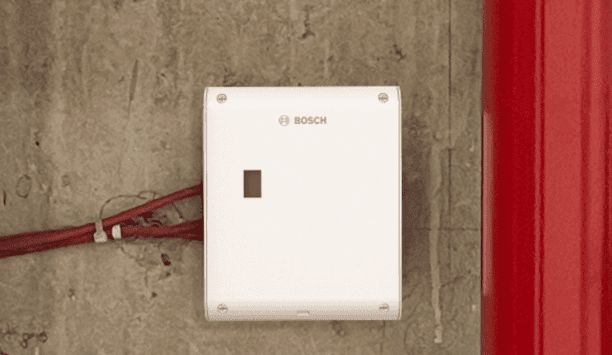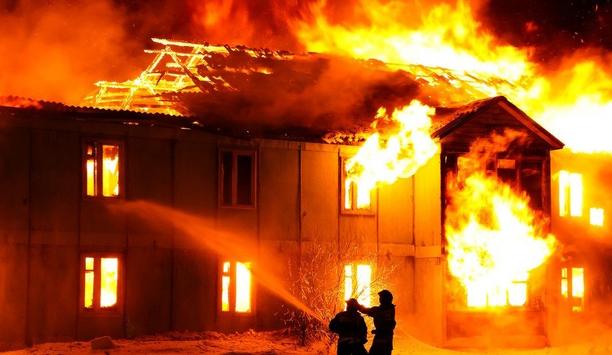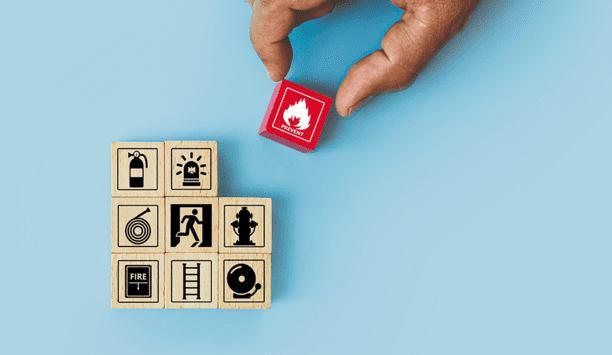Fire Emergency Response
Darley, in partnership with the National Fallen Firefighters Foundation (NFFF), is proud to announce the launch of the 2025 Fire Service Thought Leadership Essay Contest – Understanding the ‘Why’ Behind Mental Health in the Fire Service. Now in its fourth year, this initiative challenges firefighters nationwide to explore the critical yet often overlooked mental health issues within their ranks. 2025 Fire Service Thought Leadership Essay Contest Competition seeks to uncover...
Rosenbauer America, a pioneering manufacturer of fire apparatus and firefighting equipment, will be showcasing its latest advancements in technology at FDIC International 2025 in Indianapolis, IN. Attendees are invited to visit Rosenbauer's indoor exhibit (booth #3413) at the Indiana Convention Center (ICC) and the outdoor demonstration area on South Street to experience firsthand the company's commitment to unmatched operational performance and firefighter safety. Featured Fire Apparatus Ros...
The Fire Safety Event 2025, a cornerstone of the industry calendar, is poised once again to present a comprehensive display of the most advanced fire detection and suppression technologies. Taking place at the National Exhibition Center (NEC) in Birmingham, the event is expected to welcome well over 12,000 fire safety professionals, including fire safety officers, building managers, architects, engineers, and other key stakeholders. Future of fire protection Hochiki has held a major role at t...
The professional fire department of the city of Vienna has purchased six new all-terrain Tatra Force T815-7 4x4 fire engines as ‘TLFA 3000’ water tenders with Rosenbauer bodies, 6-cylinder Cummins diesel engines and Allison 4500 fully automatic transmissions. The vehicles were specified to achieve maximum robustness, superior off-road capability and responsiveness, while at the same time increasing vehicle control and comfort for the crew, for use in forest and vegetation fires as w...
On 25 and 26 June, fire protection professionals from all over Europe will gather at Exhibition Center Nuremberg for FeuerTrutz 2025. Wide-ranging innovations and new products for preventive fire protection are not just on display at the exhibition stands: A practice-driven supporting program consisting of various forums, demonstration areas and an after-work event make for a perfect trade fair experience. Visitors can now secure their trade fair ticket and learn about the supporting program&nb...
As a pioneer manufacturer of high-performance sealing systems for fire doors – they have shown unwavering support for Fire Door Safety Week since its inception in 2013. Kicking off on marks a momentous 10 year anniversary of the campaign. Fire Door Safety Week (FDSW) was launched in response to a legacy of fire door neglect. Know Fire Door Basics The campaign is managed by the British Woodworking Federation and is supported by a number of partners It's a ‘mass market’ aware...
News
Hannay Reels will showcase its line of custom hose and cable solutions designed for fire and emergency applications at the 2025 Fire Department Instructors Conference (FDIC). Located at booth 4069 in the Indianapolis Convention Center, Hannay will exhibit reels manufactured with extremely durable materials that can be customized to meet vehicle requirements. Innovations for Emergencies Hannay can be customized to meet vehicle requirements with extremely durable materials Hannay will exhibit the following reels at FDIC: SBEF Series — an electric rewind hose reel made from aluminum, making it 30% lighter than a standard booster reel EF4000 — a compact reel for a booster hose, ideal for tight spaces on emergency vehicles that cut attack times ECR1600 — an electric power rewind reel for live cable, offering various mounting options TEF Series — a dual power hose reel designed to fit two reels in the same space as one traditional style rescue reel FDIC will run from April 10–12, 2025.
Since they invested in the Fire Consultancy division, they were aware of the perceived ‘conflict of interest’ in the fire industry for companies like ourselves; Why? As they assess client fire safety risks and are then providing Active & Passive fire solutions to address the findings within the assessment. For some people, informing a company that they need to improve their fire safety and then, later on, assessing those improvements may appear conflicting. Because yes, they have passive and active fire protection and fire consultancy teams under the FireRite banner each independent from one another but with a common goal "Life safety". But, they work well at delivering a professional service to clients and any overlap is always in the best interests of clients because, quite simply, it helps reduce the risk of fire (i.e., the core business!). The Importance Of Third Party Accreditation The recent and successful NSI GOLD BAFE SP205 audit opened the team up to significant external scrutiny Certainly, there is no ‘conflict of interest’ in the one-stop fire solution they offer clients. For many years, FireRite has sought third-party accreditation for the services they provide. These ‘yardsticks’ (carried out on an annual basis), allow them to scrutinize and conduct an intrinsic evaluation of all the services. They also prove they are a professional company in terms of management, Competency knowledge, and service delivery. The recent and successful NSI GOLD BAFE SP205 audit opened the team up to significant external scrutiny. The audit paid particular attention to the contents of the selected fire risk assessments, and the knowledge and training of the fire risk consultants. Legally Committed To Providing The Best Advice Under the Regulatory Reform (Fire Safety) Order 2005 they have a legal duty to provide a service giving clients the correct information and services. This could be in terms of carrying out a fire risk assessment or devising a service and maintenance plan for a fire alarm system. If they don’t do these properly they could be subject to legal action – not something any company welcomes. Independence of the fire risk assessment process The consultancy team goes to great lengths to ensure the client is made aware of the liberty of the fire risk assessment process In addition, when carrying out fire risk assessments, the consultancy team goes to great lengths to ensure the client is made aware of the independence of the fire risk assessment process. The team is from the Fire and Rescue Service background (the ‘enforcing authority’). Everyone is aware of the stipulations of the Regulatory Reform (Fire Safety) Order 2005 mentioned in the previous paragraph. As a result, for the teams to do anything less would be extremely foolhardy from both a personal and professional perspective. Good Communication And Scrutiny Between Teams Interaction between the fire protection and fire consultancy teams involves questioning each other’s services. Good communication between teams is essential, with both sides taking findings from each other onboard and developing their services accordingly. They are confident that with the one-stop fire solution, they demonstrate a professional approach when providing fire safety services to the clients. After all, it is a competitive market, and there is a wide range of organizations that provide similar services. They are a pioneer in the field and are confident about what they can provide clients. All they ask for clients is that when they consider acting on the significant findings of the fire risk assessment, Firerite is invited for commercial competitive tender and/or quotation. They are on a number of Frameworks that have vetted the pricing structure, certification, and quality control for peace of mind.
It’s important for any organization to be able to reduce risk, manage the situation and mitigate any impact that might arise from an emergency. One of the first approaches is to identify the best man – or woman – for such a job/s. Their course can help prepare staff for such an emergency. In it, they take senior staff (managers and supervisors) through a series of confidence-building stages. This allows them to check their existing knowledge, look at their current skills and abilities and then appreciate the type of pitfalls that may arise when it comes to managing an emergency situation. Managing emergency situation Those taking the course include retired UK Fire and Rescue Senior and Principal Officers. All have extensive knowledge and experience of emergency situations, having attended to them in their role as senior fire officers. The team have also been involved in developing the UK and Welsh Governments' response to major incidents, civil emergencies, and terrorism in recent years. Those taking the course include retired UK Fire and Rescue Senior and Principal Officers During a tabletop exercise, played out in real-time, they look at pressures that arise during an emergency. This can often have a major impact on decision-making and which is why they regard it as a key learning exercise. It will consist of tutorials and led discussion sessions, while case studies will be used to highlight particular issues. Emergency response team At the end of this course, their organization will be able to respond quickly and appropriately to any emergency or crisis that might arise. Their employees will all know their roles, together with the part they have to play in their company’s Emergency Response Plan. The course lasts for one day and can be carried out at their own premises or at some other arranged venue. Those who typically attend are management within an organization. I.e. employees who will end up taking on a leadership role and, as a result, become part of the emergency response team. On the day of the course, there can be from four to 15 people attending, depending on demand. Decision-making process More detailed objectives that the course should bring about for employees attending include the ability to: List the 6C’s of command and control Change the risk assessment at the site and the impacts during an emergency Describe the concept of leadership Identify the critical information required during emergencies Apply team management and decision-making process through a tabletop exercise Recall the site emergency procedures Define the changing environment of the emergency Demonstrate transferable skills to assist command and control in the event of an emergency Pre-course training If the organization has a particular need, they are happy to come out and devise particular course materials. This could involve taking a look at their company’s risk profile. They can also include assessments for those attending. Meanwhile, those who enjoyed the course and felt they gained specialist and valuable knowledge from it are encouraged to keep their skills up to date.
Regarding the notion of fire safety in the workplace, fire signs are an essential part of this. These signs guide people to safety should a blaze occur, after all. They also point to where fire-fighting equipment such as extinguishers and safety blankets can be found. So important are they that the Regulatory Reform (Fire Safety) Order 2005 legislation insists certain signs are a legal requirement for commercial premises. Legal requirement for commercial premises So, what are these signs, and how should they be displayed? Read on to find out: Fire Action Notice - An essential sign for all work and commercial premises these days. The Fire Action Notice outlines what staff and others should do in the event of a fire in the building. This includes informing them to sound the alarm, leave and meet at an assembly point. If the building is small and the exit clear, then a Fire Exit sign may not be necessary Fire Exit Signs - If the building is small and the exit clear, then a Fire Exit sign may not be necessary. In larger premises, these should indicate the quickest way out of the building – especially if it's a commercial premises with visitors who are not necessarily familiar with the layout (such as a retail unit or nightclub). Common piece of equipment Fire Equipment Signs - These indicate where fire-fighting equipment is located. A fire extinguisher is the most common piece of equipment and should have printed instructions on it informing the user how to use it. The most common way is via the acronym PASS, i.e. Pull, Aim, Squeeze and Sweep. Other fire equipment, such as fire blankets, hoses etc., should also have signs indicating where to find the equipment. Another vital sign in the fire fighter’s arsenal is the Fire Alarm notice, i.e. indicating where this can be found in the building so that others can be alerted to the danger. The Health and Safety (Safety Signs and Signals) Regulations state, “Every employer shall ensure that each employee receives suitable and sufficient instruction and training in the meaning of safety signs.” Fire Assembly Point sign Their closed status is essential for slowing fire and smoke spreading throughout the building Fire Assembly Point - The Fire Assembly Point sign indicates where people who have left the building should congregate so they can be counted. This allows whoever is in charge to work out if there are any staff remaining in the building. The sign – and location – should be far enough from the building to safeguard everyone standing there. Fire Doors - Doors that must remain closed at all times – regardless of how hot it is outside – will have a Fire Door sign clearly visible. Their closed status is essential for slowing fire and smoke spreading throughout the building. How signs should be positioned To ensure signs are displayed in the best place possible, it's a good idea to have them professionally installed. They will familiarize themselves with the layout of the premises and any fire risks it may contain. Those working in – or visiting the building – should be able to see the signs clearly, i.e. they shouldn't be obscured by promotional posters, sale displays etc. Even if employees are familiar with the exit or location of a fire alarm, visitors will not be. Regulations for the Fire Safety Act 2021 have changed recently, meaning the premises may no longer be fire-compliant. In order to ensure users have the most up-to-date fire safety advice and help, call the team here at FireRite for advice.
Bosch Building Technologies has launched the AVENAR IO (input/output) module 4000 series, a new range of interface modules designed to elevate the efficiency and adaptability of fire safety systems. The launch debuts with the FLM-430-I2M1, a smart interface module engineered to enhance connectivity and control across multiple applications. It is fully compatible with the AVENAR fire detector 4000 series. Role of Interface Modules Interface modules are important parts that connect fire alarm systems to various building applicationsInterface modules are important parts that connect fire alarm systems to various building applications, like fire dampers, signaling devices, and fire doors. This integration helps ensure a quick and effective response during fire emergencies. Additionally, interface modules offer diagnostic features, enabling safety managers to monitor and evaluate how well the system is working throughout the entire building. Multi-Application, Smart, Compact The AVENAR IO module 4000 series introduces a new standard for interface modules with three key features: Multi-Application Versatility Unlike traditional single-use modules, AVENAR IO modules can be integrated into multiple fire safety functions, from monitoring sprinklers and dampers to controlling fire doors and signaling devices. Smart customization Configurable software allows for tailored solutions, ensuring compatibility with specific application requirements. The modules include a fail-safe option, enabling safety measures in case of power or communication failures. Compact Design The modules’ space-saving housing and easy installation on DIN rails make them ideal for use in confined spaces while reducing installation time and costs. Introducing the FLM-430-I2M1 As the first module in the AVENAR IO 4000 series, the FLM-430-I2M1 exemplifies Bosch Building Technologies commitment to intelligent fire safety solutions. Designed for critical fire response functions, this module offers: Advanced Damper Control The FLM-430-I2M1 allows precise damper settings, including partial or full open/close configurations. Fault detection is automated, with visual LED indications simplifying maintenance. Fail-Safe Functionality In the event of a fieldbus failure or power loss, the module ensures that connected systems maintain safety standards. Users can configure responses to meet their specific needs, enhancing system reliability. Cable Length With extended cabling capabilities, the module is suitable for large premises, making it ideal for projects requiring significant distances between connected systems. Energy efficiency With a low energy consumption, the module supports system savings by enabling more devices to be included in a single system loop, reducing overall costs. Wide range of applications The FLM-430-I2M1 is designed to meet the challenges of complex environments, including: Industrial Sites With its extended cable range and reliable EMC (electromagnetic compatibility) monitoring, the module is perfect for large-scale industrial facilities where robust connectivity is essential. Healthcare Facilities The module’s ability to withstand electromagnetic disturbances ensures reliability in environments like radiology rooms, where high EMC interference is common. Hotels and Shopping Malls For expansive premises, the FLM-430-I2M1 offers centralized monitoring and streamlined installation, reducing project complexity and cost. Smarter Fire Safety With the AVENAR IO module 4000 series, Bosch Building Technologies continues to deliver innovative solutions that prioritize safety, reliability, and adaptability. The FLM-430-I2M1 sets a new benchmark in fire safety, offering a smarter, more efficient way to protect lives and assets across diverse industries.
Liferaft servicing is a critical aspect of maritime safety, ensuring these essential life-saving devices are always ready for use. With decades of expertise, VIKING is a trusted pioneer in liferaft maintenance, offering comprehensive solutions through a global network of over 280 certified service stations in key shipping hubs and offshore locations. Skilled technicians ensure high-quality servicing under strict safety standards, with the process covering three key steps: Documentation, Service, and Testing. Documentation: The Foundation of Liferaft Servicing Every detail of the service is meticulously recorded and archived, ensuring traceability The documentation process is integral to every stage of liferaft servicing, ensuring that every action taken is accurately recorded and fully compliant with maritime safety standards. It begins when the liferaft is received and registered, with its details logged for tracking purposes. The onboard logbook is completed, confirming that the liferaft has been opened, inspected, and tested. Following a thorough inspection guided by VIKING's approved checklist, a re-inspection certificate is issued, verifying that the liferaft meets all regulatory standards. Every detail of the service is meticulously recorded and archived, ensuring traceability and compliance with safety requirements. To close the process, customers receive a detailed invoice, offering transparency and clarity for the work completed. With proper documentation as the foundation, the servicing process moves forward seamlessly, prioritizing safety and reliability every step of the way. Service: Ensuring Liferaft Readiness The service process is where a liferaft is carefully examined and maintained to ensure it meets the highest safety standards. It begins with the opening of the container and the careful disassembly of the inflation system. Once the liferaft is removed, the container itself is thoroughly cleaned, and any necessary fiberglass repairs are made to maintain its integrity. The container is then relabeled, ensuring it is ready for future use. The liferaft is thoroughly inspected, both inside and out, with each component checked for wear and proper function. The emergency pack is reviewed, and any expired items are replaced to meet safety regulations. Key equipment of the inflation system Service process ensures that the liferaft is fully functional, ready for deployment, and in full compliance Key equipment—such as the operating head, valve, knife, and release wire—is carefully examined and replaced if needed. The inflation system and high-pressure hoses are also checked, while the CO2 cylinder is tested to ensure it contains the correct amount of gas. Once all components are confirmed to be in top condition, the liferaft is deflated, repacked into the container, and prepared for dispatch. The service process ensures that the liferaft is fully functional, ready for deployment, and in full compliance with safety regulations. Testing: Ensuring Liferaft Performance and Safety The testing process is a critical step in verifying that a liferaft will function effectively in an emergency. During service, the liferaft is inflated using compressed air and subjected to a series of rigorous pressure tests. This includes a 60-minute working pressure test for the lower buoyancy chamber, upper buoyancy chamber, and arch chamber to ensure they can withstand the necessary conditions. If the liferaft is equipped with an inflatable floor, it undergoes a similar 60-minute pressure test. Additionally, liferafts are tested at specific intervals as required by international regulations. Every five years, a gas inflation stress test (GI) is conducted using the liferaft’s own CO2 cylinder to simulate real-world conditions. Liferaft servicing FS is also carried out at 10 years, and then annually, to check the integrity of the internal floor seams At 11 years, an additional pressure test (NAP) is performed at double the working pressure rate, with annual testing required thereafter. A floor seam test (FS) is also carried out at 10 years, and then annually, to check the integrity of the internal floor seams. These thorough tests ensure that the liferaft remains fully operational, providing the utmost confidence in its performance when needed most. Liferaft servicing is a crucial process that ensures these life-saving devices are always ready for deployment. Through a comprehensive approach—encompassing detailed documentation, thorough servicing, and rigorous testing—VIKING works meticulously to enhance the performance of liferafts. With careful inspection, precise maintenance, and exhaustive testing, they provide their customers with peace of mind, knowing their liferafts will perform when it matters most. VIKING recommends regular servicing of the liferaft This will extend the life expectancy of the liferaft - but most importantly it is the guarantee that the liferaft works perfectly in a situation where it can mean the difference between life and death.


Expert Commentary
It is no secret that electricity can have a significant impact on the fire industry, and this is not just something that is restricted to a single country. Daily, we see the devastation that improper electrical wiring and defective products can have on a global scale. Personal injury, property loss, and death can all wreak havoc on those working within the fire service and other first responders, not to mention the significant impact on the entire community where the events take place. steps to minimize electrical incidents There are steps that can be taken to minimize the number of these horrific electrical incidents Research from NFPA® that highlights home electrical fire statistics shows that U.S. fire departments responded to an estimated average of 46,700 home fires involving electrical failure or malfunction each year between 2015 and 2019. An additional 16,390 non-residential electrical fires required a response and were tracked between the years 2012 and 2016, indicating just how burdensome electrical fires are on the fire service. However, there are steps that can be taken to minimize the number of these horrific electrical incidents. The implementation and utilization of current electrical codes and standards is a foundational piece in beginning to minimize these issues from arising. Triad of codes and standards NFPA has a triad of codes and standards that focus on mitigating risk and injury associated with electricity that have become known as the Electrical Cycle of Safety™ (ECoS™). When used collectively and properly, NFPA 70®, National Electrical Code® (NEC®), NFPA 70B, Standard for Electrical Equipment Maintenance, and NFPA 70E®, Standard for Electrical Safety in the Workplace®, provide an alliance for achieving holistic electrical safety. By utilizing the documents that make up the ECoS, businesses and communities can help to mitigate electrical fires and injuries that put significant strain on the limited resources available to the fire service. NFPA has a triad of codes and standards that focus on mitigating risk and injury Electrical Cycle of Safety The Electrical Cycle of Safety starts with an installation that is grounded in the requirements of the NEC The Electrical Cycle of Safety starts with a proper electrical installation that is grounded in the requirements of the NEC. This could be the initial installation for a brand-new building, an addition to an existing building, or new equipment being installed within a building. Regardless of what type of installation is taking place, it is important that, where applicable, proper electrical permits have been filed by the licensed contractor performing the work in the municipality where the building is established. This should then include having the appropriate inspections performed by a qualified electrical inspector throughout each stage of the installation. Having all electrical work done and inspected in accordance with the applicable NEC requirements is the appropriate first step in assuring electrical safety that protects both people and property. Electrical equipment and systems After any installation has been done, electrical equipment and systems must be maintained to ensure that they remain safe for those that service the equipment, as well as those that may be utilizing the equipment, such as production line workers or, in some cases, even the general public. An example of this might be keeping an electric vehicle charger in proper, safe working order so that citizens who need to use it are not exposed to any electrical safety risks, like shock hazards. NFPA 70B provides electrical equipment maintenance requirements and should be used in conjunction with any specific manufacturer maintenance requirements for electrical equipment. Safe working practices Maintaining equipment not only helps ensure electrical safety but it also helps to preserve its reliability Maintaining equipment not only helps ensure electrical safety, but it also helps to preserve its functionality and reliability. In the case of electric vehicle chargers, utilizing Chapter 33 of NFPA 70B can help to establish a maintenance plan for community-based public chargers that will keep them safe and functional for users, while minimizing the need for first responder actions. NFPA 70E is about establishing safe working practices to protect those who engage with electrical systems and equipment while on the job through either installing or servicing them or utilizing the equipment in performing their assigned work tasks. As is well established, there are many risks associated with electricity, such as electrical shock and arc flash incidents, that can put individuals at a significant risk of injury. Safe and healthy working conditions Not only is there a moral obligation as an employer to keep employees safe on the job, but there is often a legal one as well. For example, in the U.S., the Occupational Safety and Health Administration (OSHA) was established with a mission to assure safe and healthy working conditions for working men and women by setting and enforcing standards and by providing training, outreach, education, and assistance. OSHA and NFPA 70E work in harmony to help ensure that employers are providing safe places of employment for their workers. OSHA establishes and enforces its own requirements around how employers must establish electrical safety in their place of business and, in most cases, NFPA 70E provides the means on how to accomplish those requirements. fire service and other first responders First and foremost, it means that the community as a whole becomes safer Together, the ECoS establishes a way in which electrical safety can be provided to communities that minimizes the number of responses that are required of the fire service and other first responders. First and foremost, it means that the community as a whole becomes safer. Furthermore, in a day and age where resources continually become more and more limited, alleviating the need to respond to a higher number of incidents also helps ensure that those valuable resources can be utilized where they are most needed. Knowledge to raise awareness of the ECoS So, how can the ECoS be utilized to help support the fire service and other first responders? As with many things, it begins with gathering knowledge to raise awareness of the ECoS and establish a starting point. Moving forward, this knowledge can be shared with others who have an impact on electrical safety across industries within communities. Understanding the equal importance of safe electrical installations, maintenance, and worker safety in electrical applications will make it easier to have a dialogue with the specific groups or individuals that can impact those areas. Just as the ECoS works in unison to achieve overall electrical safety, it takes everyone working together collectively to do the same.
Safe and seamless movement in our built environment hinges on accurately specified and installed door hardware, explains Russell Marks, managing director of Boss Door Controls. With millions of doors used each and every day, it’s important to recognize the details behind effective access and egress. Whether it’s the regular composite doors found in our homes, the electromechanical access points located in public settings, or the emergency exit fire doors that keep us safe in our work and leisure spaces; door hardware plays an integral role in the safety, security and accessibility of our buildings. Door control components Doorsets are assembled in a variety of configurations, sizes and styles, yet, their operation is always reliant on door control components such as hinges, locks, latches, and door closers. Take fire doors, for example, which are designed to stop the spread of smoke and fire when closed and provide an effective means of escape when open. When operating as intended, a fire door will work in tandem with each of its hardware components, but should one area fail, its fire-resistant capabilities become compromised, leaving a building and its occupants at risk. With that in mind, just how significant is accurate specification and installation? Doorsets are assembled in a variety of configurations, sizes, and styles. Suitable specification Incorrect hardware specification is a common problem associated with building safety. Door controls will directly influence the functionality, accessibility and durability of doors, and as such, it’s essential to understand a building and its user’s needs when choosing between hardware options. Considering factors such as fire safety and inclusive design, specifiers and decision makers are urged to review the door application itself, confirming the chosen hardware meets the required performance ratings, fire ratings, and the latest building standards. Where many buildings require escape routes for example, it is necessary for all doors located on those routes to have suitable exit hardware installed - which is determined by a number of factors including the building’s size and whether it is public facing or not. Incorrect hardware specification is a common problem associated with building safety. Revisions of EN 1125 or EN 179 With occupant safety and legal keeping on the line, it’s clear that specification never undervalued Equally, it is also a legal requirement for all exit devices to comply with the latest revisions of EN 1125 or EN 179 and to possess UKCA and CE markings. With occupant safety and legal compliance on the line, it’s clear that specification should never be undervalued. In fact, by focusing on a project’s requirements as opposed to quick, cost-saving wins, decision-makers can preserve the functionality and safety of buildings whilst adding real value for occupants. Fixing improper installation In many cases, an appropriately specified and perfectly operational door control device can be found ineffective solely as a result of poor installation. Door hardware installation remains a pain point for the fire safety industry specifically, with evidence suggesting that incorrect installation is one of the pioneering causes of fire door failure. Hardware products are often unique to the manufacturer, with distinctive components, fittings and fixing points, and as a result, they should never be approached as like for like installation projects. Instead, during installation, installers must look to follow manufacturer guidelines and fitting instructions. Door hardware installation remains a pain point for the fire industry. Fire door’s integrity With door closers, for example, a fire door’s integrity can quickly become compromised as a result of alignment issues and improper installation methods. Consequently, a fire door may not be able to latch or close fully from its standing position, leaving gaps large enough for smoke and fire to pass through in an emergency situation. Where there is currently no legal framework to assess the competency of installers, it’s important for teams to plan ahead, appreciating that door hardware installation is a specialized task. Fire door’s integrity becomes compromised as a result of alignment issues. Safety standards To further raise safety standards and improve installation accuracy, conscious manufacturers share a wealth of information and detailed walkthroughs in the form of installation templates, product datasheets, and video guides. Additional guidance can usually be found online, with the product packaging, or can be requested directly from the manufacturer. These materials can also be useful post-installation, where teams are required to perform regular maintenance periods as part of their obligations. Conscious manufacturers share a wealth of information. How Allegion UK can help Boss Door Controls is part of the Allegion UK group, known for its wealth of resources designed to help responsible persons, duty holders and professionals undertake product specification, installation and maintenance checks on fire doors and hardware. For accessible fire door hardware support, Allegion’s new ‘Fire Door Hardware Fundamentals’ guide is available for download and combines expert guidance with helpful terminology and useful fire door safety checklists.
The 2022 Building Safety Act, instituted in direct response to the Grenfell Tower tragedy in London, UK, has outlined a raft of new responsibilities that building owners and managers must adhere to, in line with many of the deficiencies identified post-2017. With the UK’s building stock notoriously aging, many of us live and work in buildings that were built under outdated regulations and have not been updated for decades in some cases. As such there is an enormous amount of remedial safety work to be done that covers essential fire protection features such as fire doors, alarms, sprinklers, and cladding materials. High-rise buildings Despite £5bn being allocated by the government to replace dangerous cladding, progress is slow, and it has been estimated that the amount needed to fully address the issue is closer to £50bn. In London, more than £1bn has been spent, and 700 buildings over 18m in height have applied for government support. However, almost half of those buildings currently in that process have not seen any remedial work begin. This means in the capital alone there are more than a thousand high-rise buildings that are currently in need of urgent work. The need for retrofitting is particularly notable in high-rise buildings where fire spread can be rapid, and evacuation can be challenging. Across the country, there are over 11,000 high-risk buildings over 18 meters tall. In total, there could be two decades worth of remediation work. Building regulations Perfectly illustrates the delays people are facing when making their home or place of work safe from fire We had a stark, while thankfully non-tragic, reminder in August, that showed the danger of leaving these buildings in their current state when an apartment block in Dagenham caught fire. In this particular case, an external wall survey, commissioned four years before the fire, found that the block did not fully meet building regulations at the time of construction. Despite permission being granted in May 2023 and work being scheduled for June 2023, it was still ongoing almost 9 months after the target end date of December 2023. This perfectly illustrates the delays people are facing when making their home or place of work safe from fire. Traditional fire stopping The option that is often left to building owners is to completely remove the façade and install traditional fire stopping and, in many cases, requires residents to be relocated, requires large amounts of time, is severely disruptive, and carries a large price tag. This is why I have been vocal in my support of remedial work that doesn’t carry the enormous burden and cost of completely removing a facade to complete the work. By inserting a protective sock filled with an acrylic-based fire-resistant sealant, the fire can be contained within a small section of the cavity for longer, significantly reducing the speed at which fire and smoke can spread, and I’m a huge proponent of it. Fire-resistant performance The system is devised to reinstate the fire-resistant routine of rigid and flexible wall and floor structures The system is designed to reinstate the fire-resistant performance of rigid and flexible wall and floor constructions where a retrospective cavity barrier is required. I think it’s the best solution for a huge number of cases where remedial work is required. It can be installed in residential, commercial, industrial and public buildings and the work can be carried out in-situ. Without the need to remove the whole building façade, projects can take weeks rather than months and cut out significant costs. When we look at why delays are happening, and the number of buildings where action is yet to be taken, it’s obvious that these are key stumbling blocks. Recent fire in Dagenham We’ve gained experience up and down the country, from London to Manchester, working in fire safety and have identified a number of areas which we hope that we can further improve on. Early reports from the recent fire in Dagenham suggest that the fire alarms sounded too late or were not activated at all. The cause of this has not been formerly identified, however, I envisage, and we are actively developing an ‘early warning system’, that could be installed within any wall, floor or ceiling cavity. The system could then be linked to a current fire alarm system, and/or App on your mobile phone. Expertise in sensor technology Fire can spread quickly before penetrating rooms where it would activate conventional fire alarms The benefit of this system, which would leverage our existing expertise in sensor technology, would be the ability to detect fire and smoke where conventional systems wouldn’t be able to. Where a fire is outside of the core of the building, our system would sit within cavities where fire can spread quickly before penetrating rooms where it would activate conventional fire alarms. In the event of a fire, response time is crucial. This would enable occupants to be able to leave the building or call Fire Brigade at an earlier opportunity, giving vital and potentially lifesaving time. Fire safety retrofitting The failure to address these issues could lead to further loss of life, economic costs, and legal liabilities. Fire safety retrofitting is not just about compliance but ensuring the long-term safety of residents and building occupants, particularly in densely populated areas where the risk of fire can have devastating consequences. We can make this happen far more quickly and ensure far more effective action is taken if we begin to think more imaginatively about the, giving people crucial time to act when disaster hits.
Editor's Dispatch
The Dingell Act, signed into law in 2019, has far-reaching implications, including effects on fire management and emergency services. Officially named the John D. Dingell, Jr. Conservation, Management, and Recreation Act, the law impacts fire professionals and their operations and fire prevention strategies. The Dingell Act is a comprehensive public lands bill that touches on various aspects of natural resource management, conservation, and recreation. Fire mitigation efforts One of the key provisions of the act deals with wildfire management, specifically addressing how federal agencies collaborate to prevent and respond to wildfires. The act streamlines fire mitigation efforts, enhances interagency cooperation, and encourages fire prevention measures on public lands. For fire professionals, this means better coordination among federal and local fire services, access to more resources, and improved strategies to combat wildfires. How the Dingell Act Changes Fire Management The act benefits both large fire departments and smaller teams working near public lands The Dingell Act mandates that federal agencies must coordinate with local fire services to develop effective wildfire management plans. This ensures that fire professionals have a direct line to federal resources, which can drastically improve response times. Additionally, the law increases funding for fire prevention initiatives, such as clearing vegetation in high-risk areas. Fire professionals working near national parks and other public lands will find these changes beneficial, as they create more opportunities for proactive fire control. The Dingell Act strengthens fire prevention protocols by prioritizing wildfire risk mitigation in areas under federal jurisdiction. The act benefits both large fire departments and smaller teams working near public lands. Fire professionals should recognize the broad scope of the Dingell Act and understand how it enhances safety measures in their regions. Federal and Local Collaboration Interagency collaboration is one of the key components of the Dingell Act. Fire departments in areas near public lands can now work more closely with federal agencies such as the U.S. Forest Service and the Bureau of Land Management. This collaboration is not limited to wildfire response but extends to training and resource-sharing, which can empower local teams to be better prepared for large-scale fires. By building stronger partnerships, fire professionals can develop more cohesive strategies for fire mitigation and management. The Dingell Act significantly increases the resources available to fire departments, especially in high-risk areas. Through grants and federal funding, fire professionals can access better equipment, training, and personnel to tackle fire hazards. This investment in fire prevention technology, including satellite-based fire detection systems and drones, ensures that teams have the tools they need to act quickly and effectively when fires threaten communities. Environmental Considerations Dingell Act highlights the extent of balancing fire suppression with environmental protection The Dingell Act highlights the importance of balancing fire suppression with environmental preservation. Fire professionals are encouraged to integrate eco-friendly practices into their operations, such as controlled burns that reduce vegetation buildup without damaging ecosystems. Understanding the environmental impact of fire prevention measures is essential for fire professionals who manage lands rich in biodiversity. By aligning fire prevention strategies with conservation goals, professionals can contribute to both safety and sustainability. Along with the increased collaboration between federal and local agencies come more training opportunities for fire professionals than ever before. The Dingell Act opens avenues for specialized training programs that focus on wildfire management and prevention. Firefighters can take advantage of workshops, courses, and simulation-based training to improve their skills in handling large-scale fires. This professional development is especially valuable for those looking to expand their capabilities in the face of growing wildfire risks. Future Considerations Looking ahead, fire professionals should be mindful of the evolving landscape of fire prevention. The Dingell Act represents just one piece of a broader legislative push to improve fire safety in the United States. Future regulations may build on this foundation, with more emphasis on climate change, land management, and fire technology. As professionals assess their current strategies, it is important to stay informed about upcoming changes and ensure that fire prevention efforts are aligned with national standards and policies. {##Poll1728377023 - What is the most critical resource for effective wildfire management?##}
The integration of technology into the fire service has significantly enhanced operations, but it has also introduced new vulnerabilities. Cybersecurity has become a concern for fire departments, possibly impacting their ability to respond effectively to emergencies and protect communities. Potential problems emanating from cybersecurity concerns include a disruption of a community’s emergency response system. False alarms could result from malicious computer hackers manipulating fire alarm systems, thus wasting resources, and causing potential danger for firefighters. Fire Risks From A Cyber-Attack Medical devices are connected to the IoT and are therefore vulnerable to attack Communication is another vulnerability: A cyber-attack on communication systems could hinder coordination among firefighters and with other emergency services. Potential cybersecurity targets related to the fire service include 911 systems, public safety radios, computer-aided dispatch systems, mobile data computers, and phone systems. In the EMS arena, electronic patient reporting and records management systems are at risk. Medical devices are connected to the Internet of Things (IoT) and are therefore vulnerable to attack. Many firefighter tools are operated by computers, so equipment malfunction is a real possibility. The digital world continues to infiltrate almost every aspect of firefighting. Critical equipment, such as fire trucks and rescue tools could be compromised, resulting in longer response times. Vulnerability to Ransomware Attacks Ransomware is a pernicious type of cyber-attack, involving the use of malicious software (malware) that encrypts files, rendering them inaccessible. The attackers then demand a ransom payment in exchange for the decryption key to restore the data. The city of Leeds, Ala., was hit by a ransomware attack in February 2018 that locked all city computers and data, including fire and police departments. A month later, Atlanta’s municipal systems were attacked, resulting in widespread outages, and disrupting city services. Impact on Data Loss and Privacy Fire units handle sensitive data, including the personal data of citizens and crisis responders In addition to operational concerns, there are also possible cybersecurity consequences relating to data loss and privacy. Fire departments handle sensitive data, including the personal information of citizens and emergency responders. A breach could lead to identity theft and reputational damage. On a more intangible level, a cyber-attack could erode public trust in the fire department's ability to protect the community. Negative publicity from a data breach can harm the fire department's image. Phishing schemes Among the cybersecurity threats are phishing schemes, which involve scammers attempting to obtain sensitive information from individuals, usually via email, by disguising themselves as trustworthy entities. Phishing can take the form of fake emails or websites that mimic legitimate businesses like banks, online retailers, or social media platforms. They lure victims by offering enticing deals, creating a sense of urgency, or claiming there's a problem with an account. Once the user clicks on a malicious link or provides personal information, the scammers can steal login credentials, credit card numbers, or other sensitive data. Top motivators of cyber-attacks Malicious files can be delivered as email attachments, which can contain viruses, ransomware, or other malware. Clicking a link in a suspicious email can redirect the user to a malicious website that can download malware or steal personal information. One of the top motivators of cyber-attacks is to collect personally identifiable information (PII) One of the top motivators of cyber-attacks is to collect personally identifiable information (PII), which is any data that can be used to identify an individual. This information includes name, address, phone number, social security or driver's license number, medical records, credit card or bank account numbers, and biometric data, such as fingerprints or facial images. The fire service handles a lot of PII, especially in emergency situations, including incident reports, property records, or patient information related to emergency medical services (EMS). Cyber-Criminals Have a Variety of Profiles Cyber-criminals come from a range of backgrounds and motivations. Individual hackers might be motivated by financial gain, ideology, or simply by the concept of a personal challenge. Organized crime groups might be motivated by profit, power, and/or influence. Other cyber-crime perpetrators include nation-state actors, who might be pursuing espionage, sabotage, or political influence. These threats have significant financial and technical capabilities. They include advanced persistent threats (APTs) from countries like China, Russia, and North Korea. Cyber threats posed by 'hacktivists' So-called 'hacktivists' can be motivated by political or social causes to launch distributed denial of service (DDoS) attacks, website defacement and/or data leaks. There is also the possibility of cyber-terrorists seeking to cause mass disruption or to achieve political or ideological goals. They are capable of large-scale attacks on critical infrastructure. Increased cyber-risks may lead to higher insurance premiums for fire departments There is a cost component of protecting against cybersecurity threats, a critical financial implication for cash-strapped fire departments. Implementing robust cybersecurity measures requires significant financial resources. At the other extreme, responding to a cyber-attack can be expensive, including legal fees, public relations, and system recovery. Increased cyber-risks may lead to higher insurance premiums for fire departments. Mitigation Strategies at a Glance Here are some mitigation strategies fire departments should consider: Risk assessment: Identify vulnerabilities and prioritize mitigation efforts. Employee training: Educate firefighters about cybersecurity best practices. Network security: Implement strong network security measures, including firewalls and intrusion detection systems. Data protection: Regularly back up data and encrypt sensitive information. Data minimization: Collect only the personal data that is necessary, and then limit access. Incident response plan: Develop a comprehensive plan for responding to cyber-attacks. Contingency: Create a backup plan to mitigate risk and minimize loss of critical assets in the event of an attack. Compliance: Ensure adherence with relevant privacy laws such as HIPAA and GDPR. Collaboration: Work with other agencies and cybersecurity experts to share information and best practices.
Wildfires swept through the Panhandle region of Texas earlier in 2024. The Smokehouse Creek Fire and the Windy Deuce Fire, both starting on Feb. 26, were the most significant outbreaks. The Smokehouse Creek Fire went on to become the second largest in U.S. history, burning over a million acres across Texas and Oklahoma before it was contained in mid-March. worst-ever wildfire As Texas battled its worst-ever wildfire, firefighters worked to mitigate fire and smoke damage. Among the challenges were staffing shortages. The United States is facing a serious firefighter shortage that makes fighting wildfires, including the Smokehouse Creek fire, even more difficult. Not unrelatedly, over half of all firefighters in the U.S. are volunteers. training in structural fires Vector Solutions helps agencies train, prepare, and retain their employees to have a safer, better team “We just know how demanding the wildfire season is and how fast these fires can grow,” says Robbi King, Solutions Engineer at Vector Solutions. “We want our people to be current on the expectations of what we are training, preventing our chance of getting hurt,” he says. As fires increasingly occur at the wildland-urban interface (WUI), departments with training in structural fires should expand their training knowledge to prepare. Vector Solutions helps agencies train, prepare, and retain their employees to have a safer, better team. online firefighting training In addition to the availability of more than 450 hours of online firefighting training, the company also provides software platforms to ensure requisite knowledge and the ability to perform various skills. Ensuring preparation for wildfire season, Vector Solutions has courses that meet the National Wildfire Coordinating Group (NWCG) requirements to renew certification. shortage of volunteer firefighters The shortage of volunteer firefighters is in part a reflection of the need for volunteers to hold full-time jobs to support their families, which limits their time for volunteering. Coverage of wildfire events, for example, is difficult during the day when more volunteers are at their paid jobs and unavailable. “It takes the sacrifice of vacation and other things you earn to be a volunteer,” says King. Firefighter staffing is short throughout the U.S., and agencies facing fire emergencies often call on the larger surrounding area for help. Lack of resources in emergencies Local volunteers can perform some of the duties, but outside aid generally comes in the form of paid firefighters Resources are needed to perform search-and-rescue duties after the fire. “The problem is, when you call on all your assets, are there enough people to take care of medical needs and other emergencies?” says King. Local volunteers can perform some of the duties, but outside aid generally comes in the form of paid firefighters. Volunteers cannot commit two weeks of unpaid time even in a fire emergency. Artificial intelligence Artificial intelligence (AI) can help to identify areas to search, but it takes human intervention to perform rescues and to facilitate recovery. A decayed power pole sparking dry grass was determined as the cause of the Smokehouse Creek Fire in Texas, and several other fires were also traced back to faulty power equipment. The fires caused significant damage, including hundreds of homes destroyed, livestock deaths, and widespread destruction of crops and ranch infrastructure. Wildfire impact and concerns A huge concern during wildfire season is that individuals heed evacuation orders when they come in. “We don’t want people to be left behind,” says King. “There’s nothing there that is worth your life. Minding the evacuation orders gets you out of harm’s way.” Residents in areas impacted by wildfire should also do their part to protect their homes; sometimes it’s as simple as mowing the grass. role of the weather Additional moisture can contribute to the rapid thickening of undergrowth, which contributes eventually The weather plays a significant role in determining the course of the wildfire season. Additional moisture can contribute to the rapid thickening of undergrowth, which contributes eventually to a cycle of drying out and opening the door to wildfires. The location of residences near areas prone to wildfires can contribute to risks, especially along the wildland-urban interface. “Communities want to live near nature, so they work with builders, who are trying to appease what they want,” says King. Vector Solutions Cloud “We need to look at where we are placing these homes to make sure we are pushing the vegetation back far enough to prevent the spread of fires.” Keeping firefighter skills current also makes a big difference. The Vector Solutions Cloud stores video of first responders performing skills and the video can be observed and critiqued later for better training. Scheduling and Check It Vector also provides Vector Scheduling, a time-and-attendance tool. Vector Check It streamlines routine truck and equipment tracking and centralizes asset and inventory management. Vector’s Guardian Tracking is a performance management and early intervention solution that equips first responders with a process for consistent feedback and positive recognition while identifying those in need of intervention before an adverse event takes place. Guardian Tracking Software The system can also identify when people are performing below expectations or fail to meet standards Vector Solutions can contribute to firefighter retention. The Guardian Tracking software can identify career milestone events and trace the negative impacts of a major fire event, including emotional stress. The system can also identify when people are performing below expectations or fail to meet standards. “Most agencies have de-brief sessions after milestone events, but sometimes we need additional care,” says King. impact due to COVID “We want to take care of people, but sometimes we need a reminder.” If departments can retain people, it becomes less of a recruitment effort. Four years after the beginning of the COVID-19 pandemic, the impact on the fire service is still being felt. “We are still identifying the long-lasting COVID effects, and there are small segments of communities that have not fully recovered,” says King. ”When you expose them to wildland fire and smoke, it compounds the issues.” risk assessment It will be some time before the full impact of COVID is understood, including the need for first responders to go inside residences at the height of the pandemic. “My work with the fire service and the military prepared me to always think about possibilities,” says King. “We do a risk assessment, which has allowed me to understand what the fire service needs and how we can apply our solutions to streamline and improve agencies’ processes. Having that knowledge has helped me find the right solution for firefighter needs.”
Case studies
Lucent Square, a new residential development in Leeds, has been equipped with Advanced’s EvacGo evacuation alert system to enhance resident safety and ensure compliance with the BS 8629 Code of Practice. Covering 54 apartments across six floors, the system features a standalone EvacGo panel located at the main entrance and provides fire and rescue services with a reliable method of alerting residents in an emergency. Installation of evacuation alert system Installation of an evacuation alert system was a key requirement to ensure the highest levels of safety As part of the fire strategy for the development, the installation of an evacuation alert system was a key requirement to ensure the highest levels of safety. S&R Electrical Contracting Services Ltd, responsible for the full installation, selected Advanced’s EvacGo system due to its compliance with BS 8629 and its reputation for reliability. This is the first time the team has installed EvacGo, and, following the completion of this project, they now highly recommended it based on their experience. Fire and rescue service As with all EvacGo systems, the panel at Lucent Square is housed inside a secure STS 205-certified enclosure with a BS EN 1303-compliant lock and key mechanism, ensuring that only the fire and rescue service can access the controls. This minimises the risk of tampering while guaranteeing that evacuation procedures can be implemented efficiently when needed. Steve Greenwood, Director at S&R Electrical Contracting Services Ltd, said: “This was our first installation of an EvacGo system, and we were very impressed with its ease of use and straightforward setup. Advanced’s reputation in the industry gave us full confidence in specifying their system for this project, and it has proven to be a great choice.” Key safety measures for residential buildings The installation of EvacGo at Lucent Square reflects the growing commitment to ensuring resident safety Shaun Scott, Emergency Evacuation Systems Application Engineer at Advanced, said: “We are pleased that our EvacGo system has been chosen for Lucent Square, providing an essential layer of safety for its residents." "Evacuation alert systems are becoming increasingly recognised as a key safety measure for residential buildings, and it’s encouraging to see developers prioritising solutions that adhere to best practice.” EvacGo regulatory requirements The installation of EvacGo at Lucent Square reflects the growing commitment to ensuring resident safety in high-rise buildings. With evacuation alert systems now mandatory for new residential buildings over 18 metres in England and Scotland, developers and installers are increasingly turning to trusted, compliant solutions such as EvacGo to meet regulatory requirements and provide peace of mind to residents and building managers alike. Advanced evacuation alert systems BS 8629 guidance states that the evacuation alert control system should be installed All Advanced evacuation alert systems are custom manufactured to reflect each individual building’s evacuation zones and have been developed to provide a bespoke solution that allows the fire services to control evacuation floor by floor according to the severity and location of the fire. BS 8629 guidance states that the evacuation alert control system should be installed where a ‘stay put’ policy is in force, so that it can be used to facilitate a timely and ordered evacuation for all residents. Fire safety for the occupants of high-rise residential buildings By making it easier and safer for firefighters to inform residents of a change in evacuation strategy during an incident, evacuation alert systems are helping to transform fire safety for the occupants of high-rise residential buildings across Britain. A dvanced holds regular CPDs on BS 8629 to help improve understanding of the Code of Practice and how/where it should be applied.
When the George and Abbotsford Hotel in Melrose urgently required an upgrade to its existing fire alarm system, Safe Services installed a new Advanced MxPro 5 analog addressable fire panel to provide industry-pioneering protection. George and Abbotsford Hotel The George and Abbotsford Hotel is located a 5-minute walk from the historic St Cuthbert's Way and Melrose Abbey in the Scottish Borders. A popular, busy hotel it attracts guests who are keen to walk in the footsteps of St Cuthbert across the unspoiled countryside, as well as visit ancient market towns, and local historic sites, such as Abbotsford the home of Sir Walter Scott. With guest and staff safety of paramount importance, the hotel needed an upgrade to its existing fire alarm system to bring it up to Category L2 coverage standards as the current system was obsolete and was starting to fail. upgrade the fire system The Advanced panel was also seamlessly integrated with EMS Firecell wireless devices Fire and security service providers, Safe Services, were contacted to upgrade the fire system and installed an Advanced MxPro 5 four-loop analog addressable fire panel, with all four loops used to meet the requirements of this large hotel. The Advanced panel was also seamlessly integrated with EMS Firecell wireless devices. Due to the size of the hotel, it would have been impossible to install cabling because of the extensive downtime that would be needed to fit the cables. The fire system was also interfaced with a kitchen suppression system to provide extra protection. MxPro 5 four-loop analog panel “We are very happy with the Advanced system and the installation by Safe Services. It was quite a complex project as the hotel is a big building,” said Graham Barrett, Owner of the George and Abbotsford Hotel. "The previous fire safety system was obsolete, it was a cabled system and the cables were obsolete too. It would have been very costly to install a cabled system as it was so complex. We decided on a radio system and that took a week to install." design and installation Graeme Millar, Fire Technical Sales Engineer at Safe Systems, said, “The George and Abbotsford Hotel required a new fire alarm system to meet Category L2. Housed in a large building, both the fire alarm system and cabling were obsolete." "However, installing new cabling would have meant major disruption to this busy hotel due to the building’s size. We therefore integrated the Advanced panel with the wireless EMS Firecell. The Advanced MxPro 5 is our panel of choice as it’s a trusted and reliable panel with our design and installation teams. Combining the Advanced MxPro 5 with the EMS equipment works very well and we have used this combination in a number of our projects.” robust protection and compliance Neil Parkin, Sales Manager at Advanced, said, “In hotels, it is vital to ensure fire alarm systems meet the latest standards and so protect guests and staff." "Our MxPro 5 panels are designed to make life as easy as possible, delivering robust protection and compliance that offers real peace of mind, all backed up by our highly rated technical support. Selecting wireless equipment when installing a fire system offers minimal disruption for hotels providing both time and cost benefits.” multiprotocol fire panel MxPro 5 can be used in single-loop, single-panel format, or easily configured into high-speed networks MxPro 5 is the fire industry’s pioneering multiprotocol fire panel and is certified by FM Approvals to the EN 54 standard. It offers customers a choice of four detector protocols and a completely open installer network, backed up by free training and support. MxPro 5 can be used in single-loop, single-panel format, or easily configured into high-speed networks of up to 200 panels covering huge areas. Ease of installation and configuration, as well as its wide range of peripheral options, make MxPro 5 customizable to almost any application. versatile wireless capabilities As well as compatibility with wired detector brands, MxPro 5’s versatile wireless capabilities make it easy to install robust fire alarm systems whilst saving crucial time, cost, and disruption. Harnessing the power of proven technology, MxPro 5’s wireless solutions are scalable, adaptable, and reliable – for complete fire safety and peace of mind. two-way communication Wireless solutions not only mean lower visual and physical impact, but they are also faster and cheaper to install, making them an increasingly popular alternative for sites where downtime is not an option, or re-wiring would prove disruptive. Due to two-way communication with the panel, battery replacement, and fault reporting can also be worked into the ongoing maintenance schedule via the panel service tools. false alarm management capabilities AlarmCalm delivers unprecedented control of verification and investigation delays The MxPro 5’s stand-out false alarm management capabilities are available as standard and are ideal in hotel applications. AlarmCalm delivers unprecedented control of verification and investigation delays. By dividing sites up into virtual false alarm ‘building areas’ independent of fire zones, much more precise control of false alarm management and reduction strategies can be achieved that exactly fit the needs of each part of a building. intelligent fire systems An optional AlarmCalm button allows trained occupants to verify if they believe a local fire signal is a false alarm too – a highly effective way of eliminating unwanted alarms. As a world pioneer in the development and manufacture of intelligent fire systems, Advanced products are specified in locations around the world, from single-panel installations to large, multi-site networks. Advanced portfolio The Advanced portfolio includes complete fire detection systems, multiprotocol fire panels, extinguishing control, false alarm management, and reduction systems. Advanced is owned by FTSE 100 company Halma PLC – a global group of life-saving technology companies with a clear purpose to grow a safer, cleaner, healthier future for everyone, every day.
Oshkosh Airport Products, an Oshkosh Corporation business, announced the delivery of two Oshkosh Airport Products Striker® 6x6 Aircraft Rescue and Firefighting (ARFF) vehicles to the Directorate General of Civil Aeronautics (DGAC) of Chile. The new vehicles will enhance emergency response capabilities at the Chacalluta de Arica Airport and Araucanía de Temuco Airport, maintaining the customer’s full Oshkosh ARFF fleet at both locations. reliability, trust, and security “We identify with Oshkosh Airport Products because, like our department, their team provides reliability, trust, and security,” said Manuel E. Retamales Lolas, S.S.E.I Director, DGAC. “The excellence that identifies us as a team, we also find in the Oshkosh Striker ARFF vehicles.” DGAC Chile has a long-standing relationship with Oshkosh Airport Products, dating back to 1978. For decades, DGAC has relied on Oshkosh’s robust and reliable vehicles to support its firefighters, who consistently praise the fleet’s performance and longevity. ARFF vehicles “This delivery is a testament to the trust and confidence DGAC places in Oshkosh’s high-quality, innovative ARFF vehicles,” said Robert Colon, associate manager of international sales – Latin America for Oshkosh Airport Products. “DGAC is a forward-thinking team, and we are honored to continue supporting their modernization efforts with our latest technologies.” fleet upgrade New Striker will enhance response efficiency through its innovative TAK-4® Independent Suspension system DGAC’s acquisition of two Oshkosh Airport Products Striker 6x6 ARFF vehicles is part of an ongoing initiative to upgrade its fleet with state-of-the-art equipment that meets the complex demands of unique operating environments. The Chacalluta de Arica Airport, located in one of the driest cities in South America, benefits greatly from the Striker’s high water capacity and advanced fire suppression systems, which are designed to meet these unique challenges. Similarly, Araucanía de Temuco Airport’s new Striker will enhance response efficiency through its innovative TAK-4® Independent Suspension system and firefighter-friendly cab design. Striker model "DGAC has chosen Oshkosh’s latest generation Striker model because of its unmatched performance, reliability, and operator ease-of-use," said Colon. “The vehicles are equipped with technology that will help streamline firefighting operations and deliver exceptional performance in the field. Our team looks forward to being a key partner in supporting Chile’s aviation emergency response teams for many years to come.” vehicle features The newly delivered Striker 6x6 vehicles feature: Scania DC16, 16.0 L V8 four-cycle turbocharged diesel Tier 4F engine. TAK-4 Independent Suspension. Rear steer capabilities for enhanced maneuverability. Primary roof turret with a high flow rate of 4,732 LPM (1,250 GPM) and a low flow rate of 2,365 LPM (625 GPM). Bumper turret with a flow rate of 1,135 LPM (300 GPM). Water capacity: 12,500 L. Foam capacity: 1,600 L. Dry chemical capacity: 227 kg. Training program A robust training program is being conducted for DGAC operators and technicians to ensure a smooth transition to their new Striker ARFF vehicles. Regional Oshkosh Airport Products dealer IMPOMAK S.A. has provided strong support in Chile since 2006. Based in Santiago, Chile, Impomak also provides extensive service support to all Oshkosh ARFF trucks across the nation of Chile.
CED Fire Protection were engaged to carry out the dry fire protection to the Glen Iris 4-level apartment building consisting of 16 high-end apartments with one large basement designed by Ewert Leaf. As part of the work, they installed a Pertronic fire indicator panel FIP with BOWS building occupancy system, smoke and heat detection was installed, as well as integrating control to security and mechanical services.
The iconic Eco-Power Stadium, home to Doncaster Rovers F.C., has undergone a significant upgrade to its fire safety system. In partnership with JLA Fire and Security, the stadium has adopted pioneering fire safety manufacturer Hochiki Europe, innovative open protocol technology to ensure the safety of its 15,231 capacity crowd and staff. This strategic move has not only enhanced the stadium’s safety infrastructure but also streamlined operations and reduced maintenance costs. New systems and devices The Eco-Power Stadium, with a capacity of 15,231, is a key sporting venue in the region, hosting a variety of football, rugby league, and women's football matches. It is also a premier hospitality venue for the city of Doncaster, regularly hosting business meetings, weddings, and awards ceremonies. An upgrade was required, but the installation needed to be completed in a way that meant the stadium could remain operational throughout. It was imperative that the new system and devices were all fully functional with ‘in date certification’ to allow safety certificates to be issued meaning events could safely take place. Hochiki Europe's cutting-edge ESP devices With both the need for an open protocol system and the ‘in date certification’ in mind, JLA Fire and Security, a renowned provider of fire safety solutions, chose to incorporate Hochiki Europe's cutting-edge ESP devices due to the simplicity of installation and that ESP operates on an open-protocol system. With Hochiki's renowned ultra-reliability, the stadium would now see a significant reduction in false alarms The open protocol compatibility of the Hochiki ESP devices, such as smoke, heat and multi-sensors, ensured seamless integration with other building systems, such as the stadium’s security system, enhancing overall site efficiency. With Hochiki's renowned ultra-reliability, the stadium would now see a significant reduction in false alarms, optimizing system performance. fire safety installations "Hochiki products, in particular ESP, are our ‘go-to’ for fire safety installations, particularly for projects of this size – Hochiki make the complex, easy. They provide incredible reliability when it comes to false alarms." "We were able to complete the project during the close season. Using Hochiki allowed us to achieve this. I would 100% use Hochiki products for other stadium/concert style projects in the future." Fire alarm system JLA's total care contract provides a comprehensive safety solution for the Eco-Power Stadium, meaning the facilities team there had the expert installation of both fire alarm and intruder alarm systems, regular maintenance visits to ensure optimal system performance and swift response should there be any faults. By replacing the outdated managed protocol fire alarm system with a modern open protocol solution from Hochiki Europe, JLA has significantly enhanced the stadium's fire safety capabilities.
CED Fire Protection was engaged to upgrade the existing fire indicator panel and field devices due to continual false alarms, which was interrupting guests and staff. As part of their works carried out, they installed a new fire indicator panel FIP with BOWS building occupancy system, smoke and heat detection, as well as integrating control to security and mechanical services.


Products


Round table discussion
Fostering fire safety is a basic principle, but one that suggests many different approaches and technologies. Best practices and greater innovation can play a role to ensure various aspects of fire safety (and health), but the first step is awareness. We asked our Expert Panel Roundtable: What is a fire safety trend that isn't widely adopted but should be?
Thermal imaging is an advantageous tool for firefighters on the frontline. As thermal cameras have become more compact and affordable, their availability has expanded, along with their usefulness. We asked our Expert Panel Roundtable: How does thermal imaging serve the needs of firefighters and how is it changing?
Wildfire season presents special challenges to firefighters, and environmental trends point to even more frequent wildfires in the future, due to factors such as global warming. Technology, in all its variety, provides new tools to aid departments tasked with fighting wildfires. We asked our Expert Panel Roundtable: What are the emerging technologies in wildfire prevention and protection?
Resources
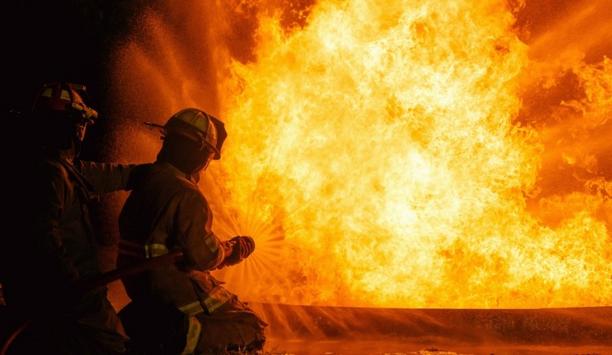
The New Future For Fire Agencies
Download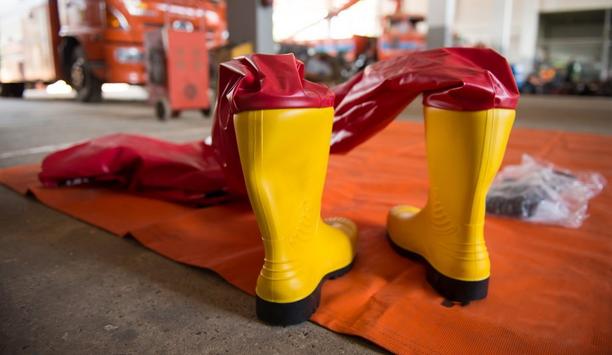
Firefighters And Asbestos Exposure
Download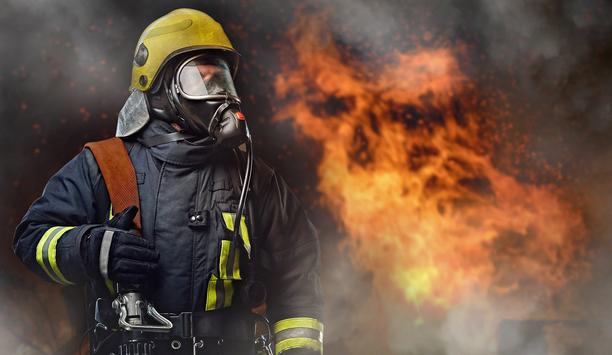
Flame-Resistant Fibers Combine Protection and Comfort for Firefighters
Download
7 Apparatus Trends For The Future Of Firefighting
Download
Hotel And Motel Fire Safety
Download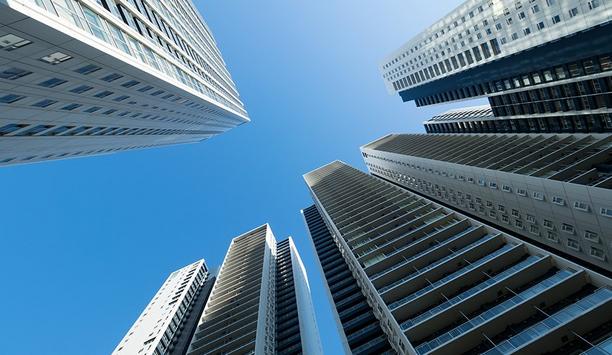
Fire Safety Tips For High-rise Apartments
Download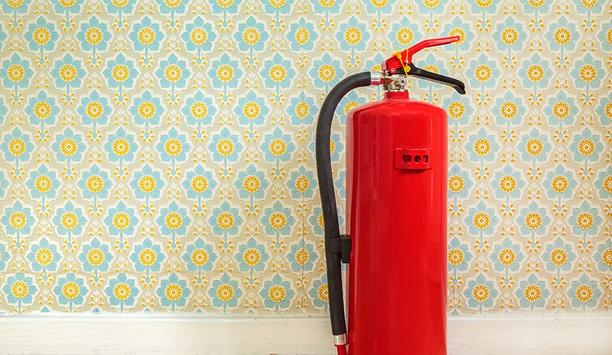
Planning An Escape During A Fire Can Save Lives
Download

Videos
Fire Emergency Response: Manufacturers & Suppliers
- Cervinka Fire Emergency Response
- Fire Research Corp. Fire Emergency Response
- Waterous Fire Emergency Response
- VIKING Fire Emergency Response
- First Alert Fire Emergency Response
- Britannia Fire Ltd Fire Emergency Response
- Bristol Uniforms Fire Emergency Response
- Pozhtechnika Fire Emergency Response
- Delta Fire Fire Emergency Response

The New Future For Fire Agencies
Download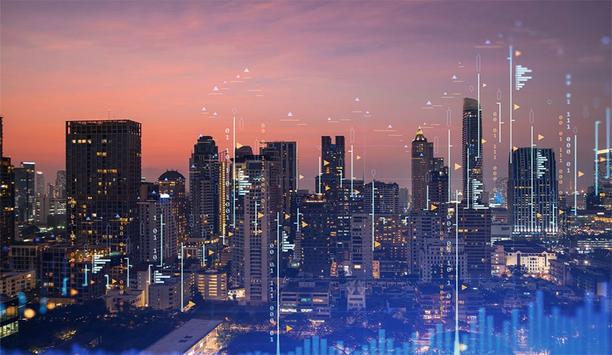
The Eight Key Trends in Fire Detection in 2023
Download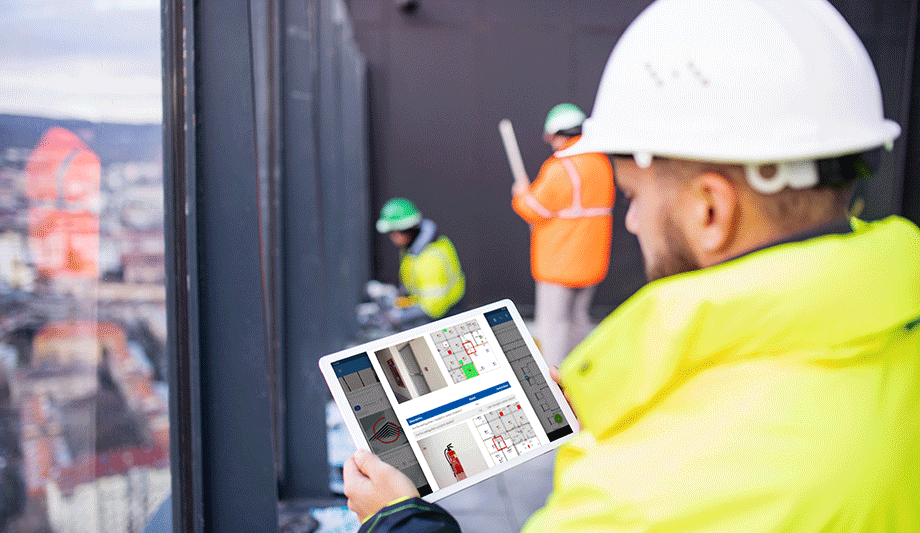
A Digital Platform to Improve Fire Safety Compliance and Inspections
Download
Overcoming the Challenges of Fire Safety in the Paper Industry
Download
Carbon Monoxide: Creeping Killer Caught In The Act
Download









